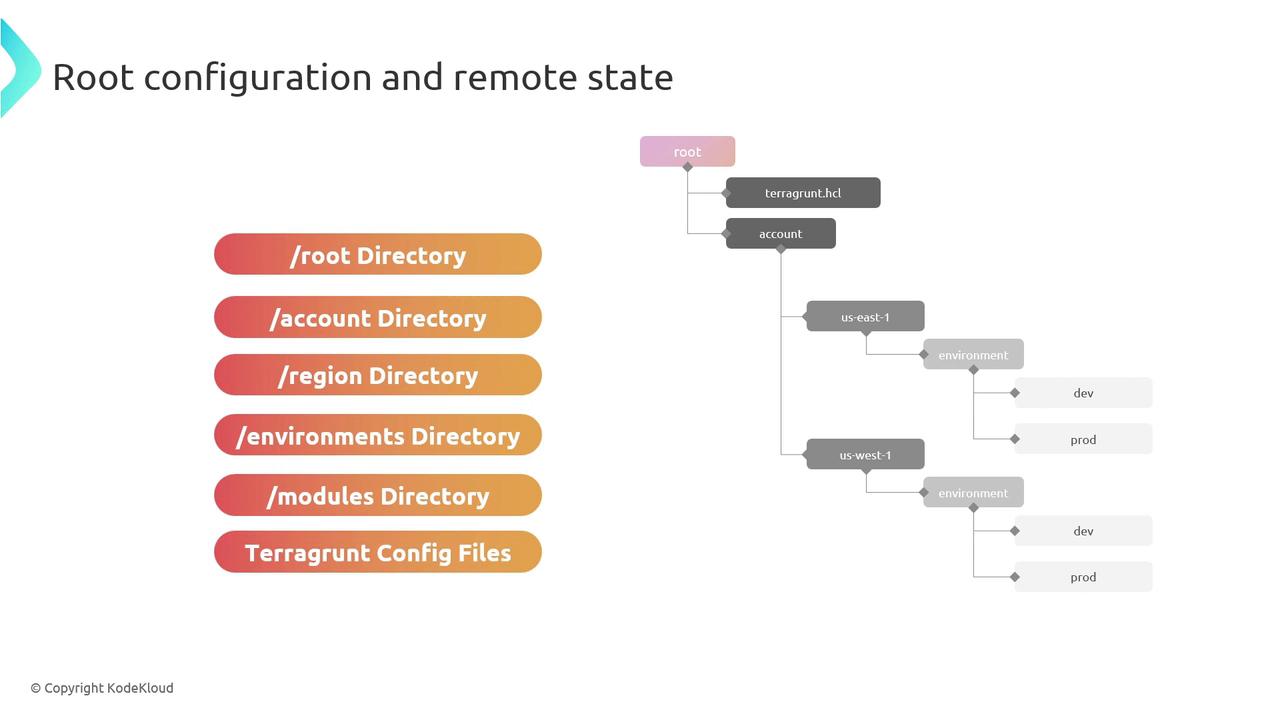Terragrunt for Beginners
Building our first AWS Demo with Terragrunt
Setting Up Account Regions and Environments
In this guide, you’ll learn how to organize Terragrunt configurations for AWS infrastructure into logical layers—root, account, region, and environment—while centralizing reusable Terraform modules. This structure promotes consistency, scalability, and easy maintenance across multiple AWS accounts and regions.
1. Root Directory Overview
At the top level, maintain a root/ directory that holds all live environments and shared modules:
root/
├── account-1/
├── account-2/
└── modules/
| Directory | Purpose |
|---|---|
| account-1/ | Terragrunt configurations for AWS Account 1 |
| account-2/ | Terragrunt configurations for AWS Account 2 |
| modules/ | Central repo for all Terraform modules (local, Git, or registry) |
Note
Place reusable Terraform modules in modules/ to keep your infrastructure code DRY and version-controlled.
2. Account-Level and Region Structure
Within each account folder, separate configurations by AWS region. Inside each region, create one directory per environment (dev, staging, production, etc.):
root/account-1/
└── us-east-1/
├── dev/
├── staging/
└── production/
- us-east-1/: Configurations scoped to the
us-east-1region. - dev/, staging/, production/: Environment-specific folders containing
terragrunt.hcl.
3. Terragrunt Configuration (terragrunt.hcl)
Each environment directory must include a terragrunt.hcl file that:
- References the Terraform module source.
- Defines input variables for that environment.
- Configures remote state backend (S3 & DynamoDB).

4. Example terragrunt.hcl
Below is a sample configuration for the dev environment in account-1’s us-east-1 region:
terraform {
source = "../../../modules/vpc"
}
inputs = {
environment = "dev"
cidr_block = "10.0.0.0/16"
}
remote_state {
backend = "s3"
config = {
bucket = "my-terraform-state"
key = "account-1/us-east-1/dev/terraform.tfstate"
region = "us-east-1"
dynamodb_table = "terraform-locks"
encrypt = true
}
}
5. Customization & Best Practices
- Use clear, consistent naming conventions for accounts, regions, and environments.
- Reference your shared modules via relative paths or Git/Terraform Registry URLs.
- Leverage Terragrunt’s
includeanddependencyblocks to minimize duplication.
Warning
Never hard-code sensitive values (API keys, secrets) in terragrunt.hcl. Use AWS Secrets Manager, SSM Parameter Store, or environment variables instead.
Links and References
By following this layered directory structure and best practices, you’ll build a scalable, maintainable foundation for managing AWS infrastructure with Terragrunt.
Watch Video
Watch video content